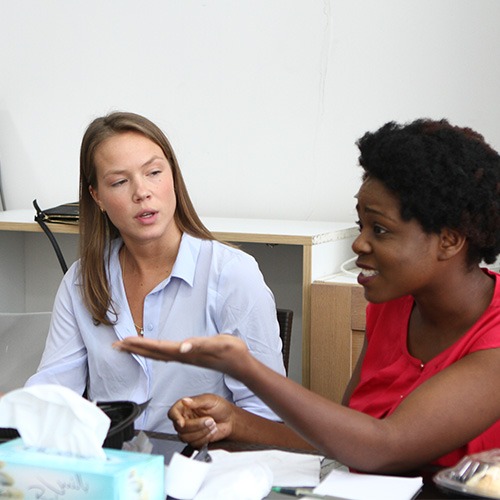Four Things We Learned From 2017 World Population Day

This week the Bill and Melinda Gates Foundation pledged $375m to fund family planning and Melinda Gates has been speaking to the world’s media about the wide-ranging impact of helping women avoid pregnancies, particularly young girls.
Why is the Gates Foundation focusing their money on what many would see as a private, family matter when there are still such major global issues to sort – from peace to eradicating diseases like malaria?
The role of women in under-developed countries is absolutely critical for the long term sustainability of these countries. Earlier this year we looked at the economic and social impact of women in rural economies and how they can help boost economic prosperity.
So this is not a ‘nice to have’ but essential to helping reduce poverty, ensuring women’s education and long term prosperity – just look at the economic figures below – and increasing the chances of peace.
Around the world, the UN estimates that 225 million women who want to avoid pregnancy are not using safe and effective family planning methods. But access to safe, voluntary family planning is a human right according to the UN Population Fund. Reasons include lack of access to information or services or lack of support from partners and communities. Most women lacking these safe and effective methods live in sub-Saharan Africa and the Indian subcontinent according to the World Health Organisation.
‘The UN estimates that 225 million women who want to avoid pregnancy are not using safe and effective family planning methods.’
Improving access is also a key factor in reducing poverty around the world. The Gates Foundation has taken a lead in this year’s debate and set out why smart family planning reduces poverty.
What were the main themes around World Population Day this year and what are still the big challenges?

What should we pay attention to World Population Day?
World Population Day focuses attention on global population issues – it has been observed since 1990 and includes the UN and other international organisations, NGOs, aid agencies, organisations and individuals.
In 2017, World Population Day focused on family planning and the need for people to access this no matter their circumstances. A dedicated family planning summit brought together people from across the globe to discuss efforts to reach the 2020 goals and ensure that more women and girls are able to plan their families and their futures.
What are the lessons from this year’s discussions?
Debates this year have focused on the key ways that effective family planning can aid development and there are four main takeaways
- Effective family planning is a key health issue for women around the world. The Guttmacher Institute gives figures that show how improved access to safe and effective family planning could help save 224,000 women’s lives per year, will prevent 67 million unplanned pregnancies, 36 million induced abortions and 2.2 million infant deaths each year. The World Health Organisation lists reproductive and maternal health in its top health issues facing women right now.
- Effective family planning is also good for personal economic prosperity, particularly for women. The World Bank looked at economic indicators related to adolescent pregnancy and measured the annual income that a young mother misses out on in her lifetime. One of the things they found was that if adolescent girls in developing countries such as Brazil and India delayed having children until their early twenties, the economic benefit would be more than $3.5 billion and $7.7 billion respectively. Delaying pregnancy and removing the financial burden of large families helps more people to escape poverty and benefits families as a whole. This was one of the key messages from Melinda Gates.
- It also brings savings to national finances – money that can then be invested elsewhere assist development efforts. An example cited elsewhere is Bangladesh, where analysts concluded that $62 spent by the government to prevent an unwanted birth saved $615 in expenditure on other social services. The UN’s Department of Economic and Social Affairs estimates that every dollar spent on family planning saves governments between $2 and $6.
- There is also a demographic bonus to reducing family sizes – a boost to economic productivity as the number of people in the national workforce increases while the number of dependents falls. As the UN Nations Population Fund says; “smaller numbers of children per household generally leads to larger investments per child, more freedom for women to enter the formal workforce and more household savings for old age. When this happens, the national economic payoff can be substantial.” An often cited example is South Korea, which halved population growth between 1951-58. Other East Asian countries have followed suit, reducing family sizes while delivering a massive boost to economic prosperity leading to rapid development.

What is being done around the world?

Increasingly NGOs, aid agencies and the private sector are stepping in to fund family planning efforts. The Bill and Melinda Gates Foundation announced that it will increase funding for family planning by 60%, giving $375m extra over the next four years. About $250m of this money will be used to fund services for young people.
At the frontline, Marie Stopes International operates in 37 countries while health organisations such as Médecins Sans Frontiers place medical staff in conflict zones and fragile areas around the world who are equipped to help women seeking family planning advice.
This contrasts with new US government policy to cut all funding for international family planning initiatives. Previously the US was the largest international donor for family planning, giving over $600m a year.
As well as sponsoring the world day, the UN hosted the 2017 Family Planning Summit in London to bring together leaders and advocates from around the world – to discuss issues around family planning and to commit to expanding access to family planning methods for an additional 120 million women.
This leaves us to ask, how can other aid agencies help address family planning issues and what are the best practice examples?



